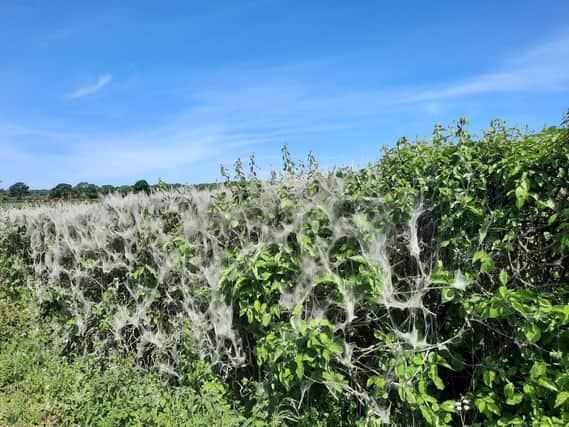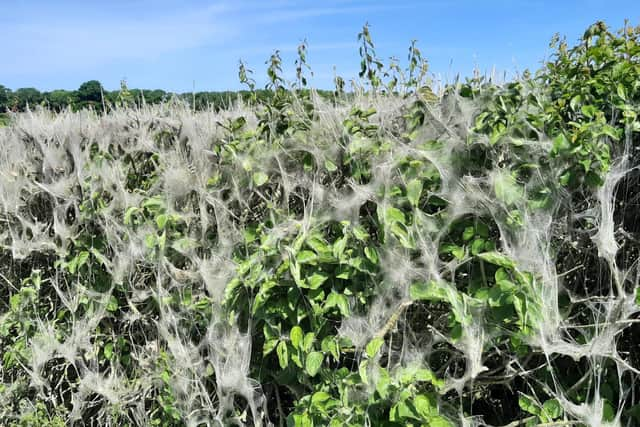The very hungry caterpillars giving Northamptonshire's countryside a spooky look


Anybody not a fan of spiders or anything spooky should maybe look away now.
These eerie-looking webs were spotted by Chron reader Dawn Homer while out for her regular bike ride in the Northamptonshire countryside.
Advertisement
Hide AdAdvertisement
Hide AdThe blanket of woven silk looks more like something from Harry Potter or Halloween, rather than spring! Or is it the handy work of those eight-legged creatures loved by some and despised by others.
Dawn said: "I saw this on the road between Stoke Bruene and Shutlanger. I cycle every other day, all over the county and I've not seen anything like it anywhere else."
Don't fret, though, it's not the work of anything mystical or an army of arachnids .. just some very hungry caterpillars making themselves comfy.
Hundreds or maybe tens of thousands of the harmless little creatures which belong to a group of insects called Small Ermine moths.
Advertisement
Hide AdAdvertisement
Hide AdThey cover hedgerows with a blanket of silky webs before settling down munch away on their dinner, free from predators, and gorge on vegetation before pupating into moths.


Local naturalist Mark Hammond, moth recorder for the Bedfordshire and Northamptonshire branch of wildlife charity Butterfly Conservation, revealed: "The hedgerow looks like it could be Spindle, which would likely mean the moth is Spindle Ermine — Yponomeuta cagnagella — which is relatively common and can cause infestations such as this on occasions.
"The larvae are otherwise harmless but sadly there are a couple of moth caterpillars that live in smaller webs who’s hairs can cause irritation to humans and many harmless webs get destroyed as a result."
Mark Parsons, head of moth conservation at Butterfly Conservation added: "We often receive reports of ghostly silken webbing covering sections of hedgerows at this time of year. Although it can look rather sinister, don't be alarmed .. the most likely culprit is a harmless caterpillar.
Advertisement
Hide AdAdvertisement
Hide Ad"These striking and obvious webs hide hundreds and sometimes tens of thousands of caterpillars of a group called the Small Ermine moths. There are eight species in this group, although only the Orchard Ermine, Spindle Ermine and Bird-cherry Ermine tend to produce such extensive webbing.
"Sometimes these webs are so extensive that they can cover nearby objects such as benches, bicycles and gravestones.
"These webs and caterpillars are harmless and usually last from May to June. The webs slowly disappear over the summer and typically the hedgerow shrubs/trees recover. The adult moths fly later in summer."